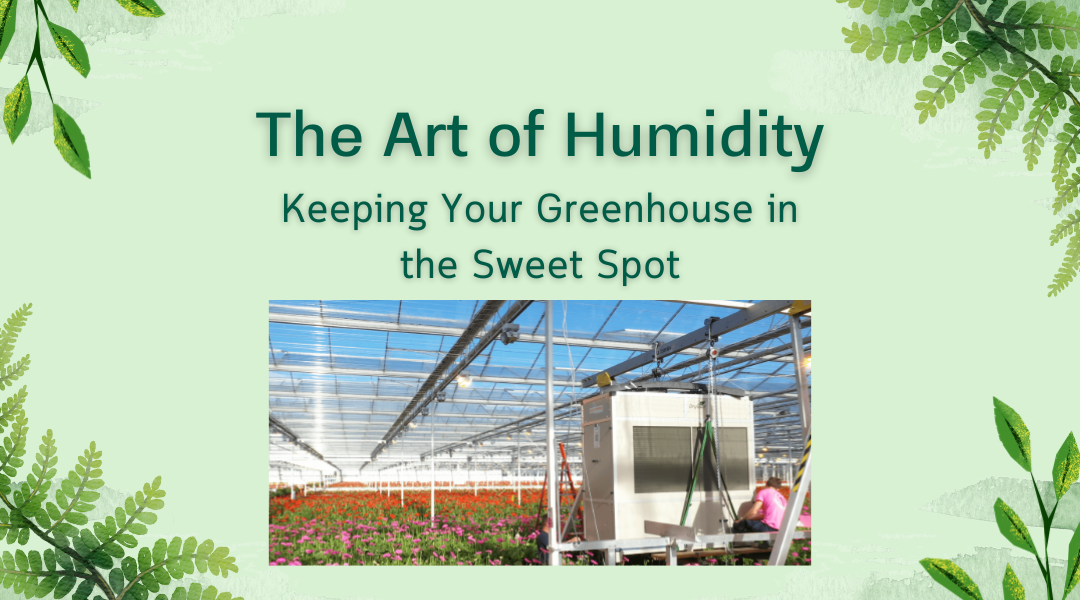Walk into a perfectly balanced greenhouse, and you can almost feel it—leaves perked up, soil moist but not soggy, the air carrying just enough weight without feeling oppressive. Nailing humidity isn’t about hitting textbook numbers; it’s about reading your plants like a seasoned bartender reads a regular. Some days they need a stiff drink of moisture, other days they’re drowning and need you to cut them off.
Why Humidity Can Make or Break Your Plants
Most greenhouse crops thrive in that 50–70% humidity range, but here’s the catch: it’s not one-size-fits-all. Your basil might start throwing a fit if things dip below 60%, while your succulents would rather you forget humidity exists. Get it wrong, and you’ll see the drama unfold—leaves curling like they’ve been scorched by a blowtorch, or worse, that fuzzy gray mold creeping in like a bad houseguest who won’t leave.
When the Air’s Too Dry: Bringing the Rainforest Indoors
Ever walked into a greenhouse and felt like you’ve stepped into a desert? Your plants feel it ten times worse. Here’s how to fix it without turning the place into a swamp:
1. The Misting Magic Trick
A fine mist in the morning is like espresso for your plants—it wakes them up without drenching them. But go too hard, and you’re just watering the air, not the roots. Think of it like seasoning food; a little goes a long way.
2. Pebble Traps (The Lazy Gardener’s Best Friend)
Fill a tray with pebbles, add water just below the top, and set your potted plants on top. As the water evaporates, it gives your greens a personal humidity bubble without you lifting a finger. It’s the greenhouse equivalent of a slow cooker—set it and forget it.
3. Group Therapy for Plants
Cluster your moisture-loving plants together. They’ll sweat it out collectively, creating their own little microclimate. It’s like how a packed concert feels hotter than an empty room—basic physics, but it works.
When It’s a Steam Room in There: Cutting the Moisture
Too much humidity turns your greenhouse into a petri dish for trouble. Here’s how to dial it back before your plants start growing mushrooms instead of fruit:
1. Ventilation: The Old-School Fix
Crack a vent or door and let the sticky air escape. It’s the greenhouse version of rolling down the car windows on a hot day—sometimes low-tech works best.
2. Dehumidifiers: The Big Guns
If you’re growing orchids or tropicals, a small dehumidifier can be a game-changer. Just don’t let it suck all the life out of the air—your plants still need to breathe.
3. Strategic Watering
Water in the early morning so excess moisture has time to evaporate. Night watering is like tucking your plants in with a wet blanket—nobody sleeps well like that.
Tools of the Trade: How to Stay Ahead of the Game
A hygrometer is your humidity compass. Skip the cheap stick-on ones—they lie like a bad weather forecast. Invest in a digital model with a memory function so you can track swings over time.
Pro Tip: Hang your hygrometer at plant level, not up near the roof where heat collects. That’s like measuring the temperature of your oven instead of the food inside—useless data.
The Rhythm of Humidity Control
Humidity isn’t a “set it and forget it” deal. It’s a dance:
- Summer mornings might need misting.
- Winter nights might demand a dehumidifier kick.
- Rainy seasons call for extra ventilation.
Your plants will tell you what they need—if you’re paying attention. Crispy leaf edges? More humidity. Yellowing, limp stems? Dial it back.
Final Thought:
The best greenhouse keepers don’t fight humidity—they work with it, like a surfer riding a wave. Too much or too little, and you wipe out. But catch the rhythm, and you’ll watch your plants thrive in ways you never expected.
